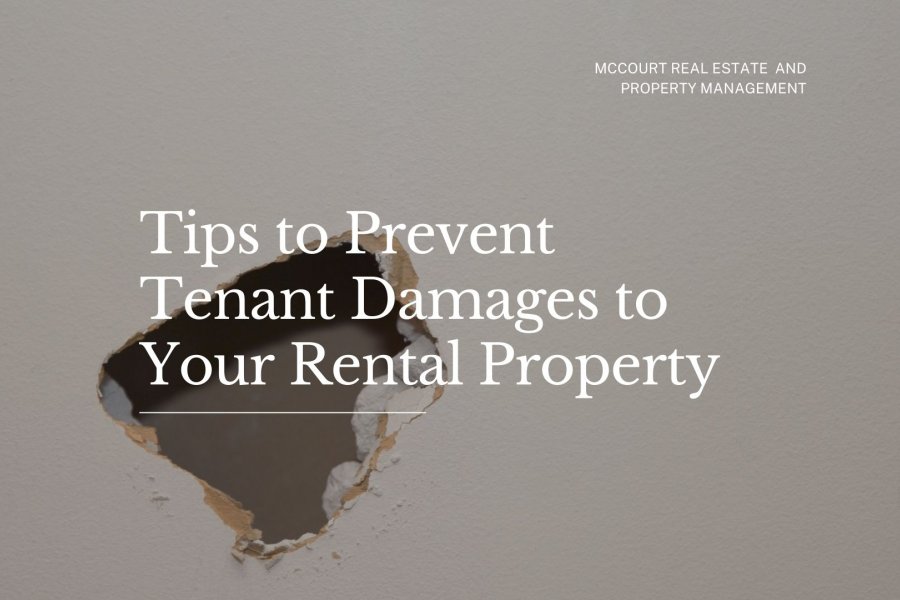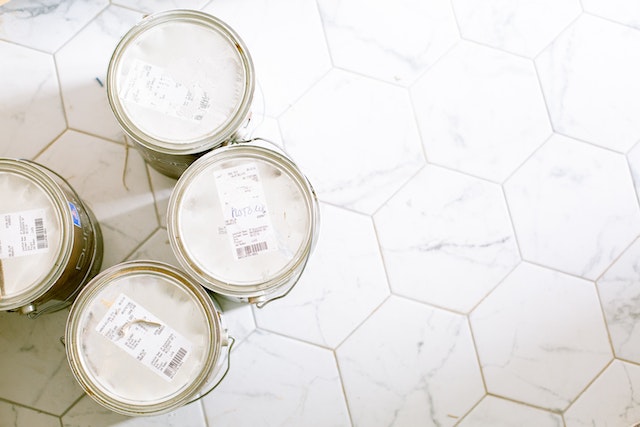
Managing a rental property on your own means you’re in charge of tenant management and maintenance. Sometimes, those two things converge, and you have to deal with property damage caused by tenants.
Rather than waiting until after the damage occurs to think about what needs to be done, you can take proactive steps to minimize the likelihood of tenants causing damage to your property. Keep reading to learn some strategies!
8 Ways to Minimize the Risk of Tenant Damage
1. Establish a Reliable Tenant Screening Process
To minimize the chance of selecting problematic tenants, create a thorough tenant screening process so you can review each applicant thoroughly. It’s important to contact previous landlords to learn about the tenant's past behavior. Did they leave the rental unit in good condition when they moved out?
If the potential tenant has a history of causing property damage, find out whether they took responsibility to rectify the situation. If they didn’t, it’s probably wise to avoid renting to them.
In addition to contacting previous landlords, review the tenants' creditworthiness and verify their employment and income. You should also check for a clean criminal record and any past evictions. It’s important that each potential renter is reviewed using the same criteria to comply with Fair Housing practices.
2. Create a Complete Lease Agreement
A solid lease or rental agreement is essential for protecting landlords from potential conflicts with tenants. Clarifying the terms and conditions at the beginning of the tenancy can help limit risks. It's beneficial to specify certain practices that residents should avoid while living in your rental property.

You can outline the rules for things like hanging items on walls, repainting, and reporting maintenance issues. This minimizes the risk of property damage by allowing renters to understand what the expectations and responsibilities are before signing the lease.
3. Consider Potential Issues at Move-In
One of the most vulnerable times for landlords is when a new tenant moves in. If you’re renting out an unfurnished property, you have a slightly higher risk of damage being caused by heavy furniture during the moving process.
Consider strategies to mitigate these potential damages by facilitating the smooth transfer of bulky furniture with minimal impact. You can place furniture sliders, floor coverings, doormats, and carpet runners.
4. Perform Routine Inspections of Your Property
To quickly identify any issues with your property, it is important to conduct regular inspections. Since landlords are responsible for maintaining a habitable living space for their tenants, scheduled property inspections can be an important way to keep your property in good condition.
Inspections can help you spot property damage early, which allows you to make repairs before something becomes a more expensive issue. It also helps ensure compliance with building, health, and safety standards.
5. Plan for Effective Property Renovations
Upgrading your rental property can help it stand out in a competitive market. When you are planning for renovations, opt for materials that will withstand wear and tear over time. Tenant damage isn’t always caused on purpose, so making sure your property is set up to handle anything can lower repair costs in the long run.

6. Build a Positive Landlord-Tenant Relationship
Managing a property involves constant interaction with people, so it’s important to create a positive environment for renters and establish a strong professional relationship. Being a good landlord means actively listening to tenants and quickly fixing property issues. When you address their concerns quickly, tenants are more likely to be respectful of the property.
Respect your renters’ privacy and their right to quiet enjoyment. If you need to carry out property inspections or maintenance, make sure you give your tenants a heads-up. Even though Texas doesn’t have a required timeline for notifications, it is still good practice to provide 24 hours’ notice for non-emergency maintenance issues.
7. Pay Attention to Long-Term Renters
Regardless of how long a tenant has been living in your rental property, regular inspections are necessary to identify possible property issues. The likelihood of normal wear and tear and property damage increases with longer tenancies. Prioritize repairs instead of delaying them.
When landlords postpone fixing issues, it raises the risk of tenant turnover. In Texas, the repair and deduct remedy is available to tenants, although the steps to achieve it are strict for tenants. Additionally, if tenants attempt DIY repairs, it can result in further damage and the need to hire a professional to fix the problems correctly.
8. Require a Security Deposit from Tenants
One effective way to minimize property damage is to ask for a security deposit from tenants. Residents are motivated to retrieve their deposit, which encourages them to keep the unit in good condition.

A security deposit allows tenants to take responsibility for maintaining the rental property. In Texas, there is not a limit on the amount you can request as a security deposit, but a maximum of two months’ rent is fairly standard.
Bottom Line
Implementing these strategies can help prevent tenants from causing property damage due to recklessness, neglect, or abuse. You also ensure that you are meeting your duties as a landlord and cultivating a positive relationship with your renters.
However, not all landlords have the time to manage their real estate investments. If you're one of them, consider hiring a reliable property management company like McCourt Real Estate & Property Management. We take care of everything from marketing, rent collection, property maintenance, inspections, repairs, and tenant screening. Contact us today!